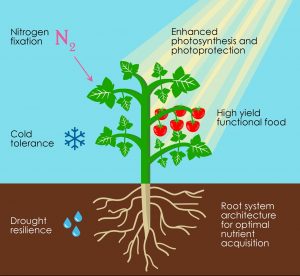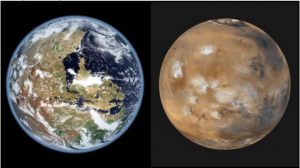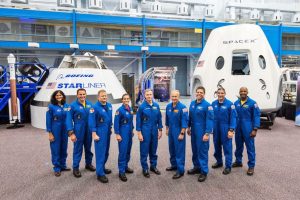The future of manned space flight takes center stage this month. There’s some good news, some bad news and a big announcement so let’s get to it!
Starting with the good news a major new survey has been published in the journal ‘Genes’ discussing the research and advances in biotechnology that could help us grow food on Mars. Obviously such technology will be absolutely necessary for any long term human base on the red planet, let alone a settlement.
Authored by the Australian scientists Briardo Llorente, Thomas C. Williams and Hugh D. Goold the survey article is entitled ‘The Multiplanetary Future of Synthetic Biology’. The article begins by reviewing the difficulties that we know will be encountered when we try to grow food on Mars. Chief among these will be the fact that the surface of Mars receives only 43% as much sunlight as does the Earth because of the red planet being about 75 million kilometers further from the Sun.
The authors point out however that in general the plants of Earth only absorb about half of the light that falls upon them, in fact plants reflect almost all green light, that’s why they look green! Genetic modification of Earth plants to enhance the process of photosynthesis is a real possibility with our growing knowledge of the chemistry of chlorophyll (see my Post of 23June2018).
At the same time any plants we attempt to grow on Mars will have to be ‘designed’ to survive and grow in an environment extremely hostile to most life on Earth. Some of the hostile factors that plants on Mars will have to endure include extreme cold and long periods of drought. However there are already plants here on Earth that have adapted to such conditions and genetic studies of those plants should provide clues to help genetically engineer other plants to adapt to them as well. The image below illustrates some of the genetic engineering of traits that will be needed to develop plants suitable for life on Mars.

Another study however puts something of a roadblock in the way of terraforming Mars by adapting plants to endure the conditions there. Now everybody knows that the process of photosynthesis requires two main ingredients, sunlight and carbon-dioxide. Well, we’ve already mentioned sunlight but a new study by Bruce Jakosky, professor at the University of Colorado at Boulder and Christopher S. Edwards, Assistant Professor at Northern Arizona University has concluded that Mars lacks sufficient CO2 to either promote plant growth on a large scale or to help raise the planet’s temperature by using the CO2 as a greenhouse gas. The image below shows an artist’s impression of what a terraformed Mars could look like compared to the Mars that we see today.

The study was funded by NASA and made use of all of the available data from the many spacecraft, both landers and orbiters that have been studying Mars over the last several decades. This implies that the results of the analysis conducted by Professors Jakosky and Edwards is based on the best knowledge humanity has so this study could be bad news for those planning on colonizing Mars.
Of course it has already been suggested that Mar’s deficiency in CO2 could be fixed by importing the gas from elsewhere in the Solar System. Comets are known to possess large amounts of CO2 as well as even more water, which Mars could certainly use as well.
Imagine the possibility of rerouting the orbit of a couple of comets so that they are captured into Mars orbit allowing their resources to be sent down to the planet’s surface. Sounds like the plot of a science fiction novel, ‘The Comet Cowboys!’
Finally today there was a big announcement today by NASA of the astronauts selected for the first four missions of the space agency’s Commercial Crew Program. These missions, with spacecraft designed and built by the private corporations Boeing and Space X will be the first time in seven years that astronauts will launch from American territory.
The initial, unmanned test missions for Space X’s dragon and Boeing’s Starliner capsules are scheduled for later this year while the first actual manned missions will take place early next year. These test missions will then be followed up with the first operational mission to the International Space Station (ISS) at a later date.
As I mentioned above the first test mission for each spacecraft will be unmanned, the crews for the second test mission are:
Space X’s Dragon: Astronauts Bob Behnken and Doug Hurley
Boeing’s Starliner: Astronauts Eric Boe, Nicole Anapu Mann and Boeing Astronaut Chris Ferguson.
The crews for the first operational flight to the ISS are:
Space X’s Dragon: Astronauts Victor Glover and Mike Hopkins
Boeing’s Starliner: Astronauts Josh Cassada and Suni Williams
The image below shows the chosen astronauts with the Space X Dragon and Boeing Starliner Capsules in the background.

For the latest information about the crews selected for the Commercial Crew Missions click on the link below to be taken to NASA’s official site!
https://www.nasa.gov/press-release/nasa-selects-astronauts-for-first-us-commercial-spaceflights-0
